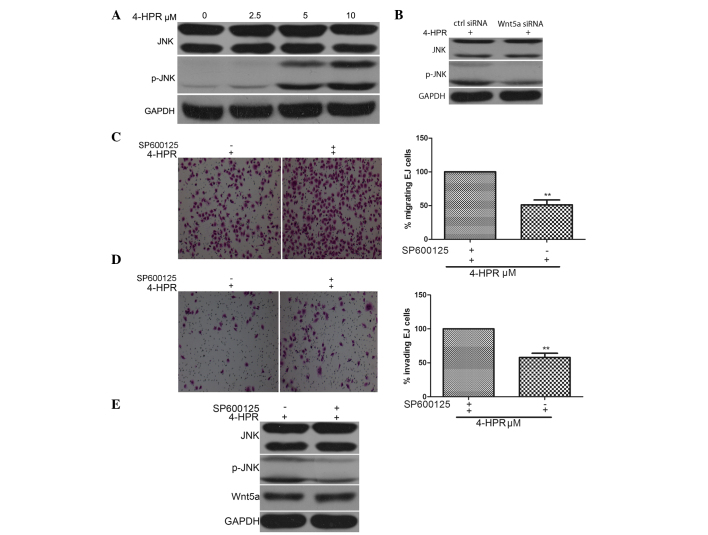Figure 3.
4-HPR inhibits the migration and invasion of EJ cells by stimulating Wnt5a activity and JNK phosphorylation. (A) EJ cells were incubated with the indicated concentrations of 4-HPR for 48 h, and the protein levels of JNK and pJNK were measured by western blotting. GAPDH was used as an internal control. (B) EJ cells were treated with 5 µM 4-HPR for 48 h, and then transfected with control or Wnt5a small interfering RNA. Cell lysates were assayed for JNK and pJNK by western blotting with anti-JNK, anti-pJNK and anti-GAPDH antibodies. (C-E) EJ cells were treated with SP600125, an inhibitor of JNK, and then incubated with 5 µM 4-HPR for 48 h. Cell migration and invasion were measured by (C) migration and (D) invasion assays (magnification, ×100), (E) and the protein extracts were analyzed by western blotting for JNK and pJNK. Data were expressed as the mean ± standard deviation from three independent experiments. *P<0.05, **P<0.01 vs. control. 4-HPR, N-(4-hydroxyphenyl) retinamide; siRNA, small interfering RNA; Wnt5a, wingless-type mouse mammary tumor virus integration site family, member 5a; GAPDH, glyceraldehyde 3-phosphate dehydrogenase; ctrl, control; JNK, c-Jun N-terminal kinase; pJNK, phosphorylated c-Jun N-terminal kinase.

